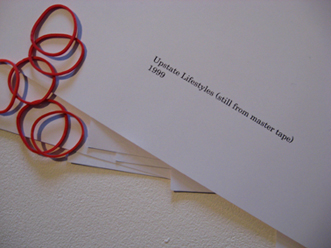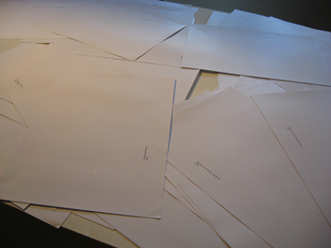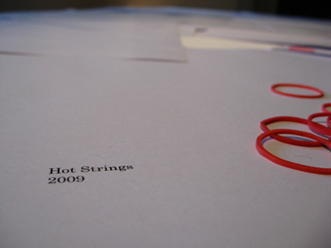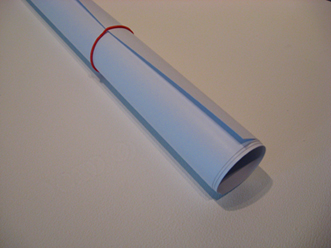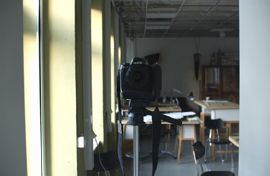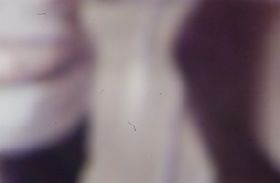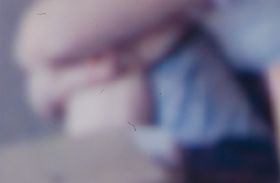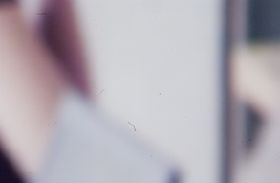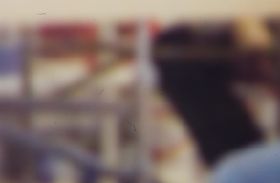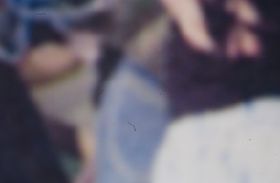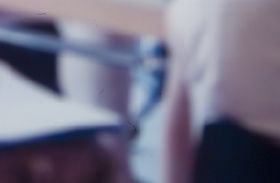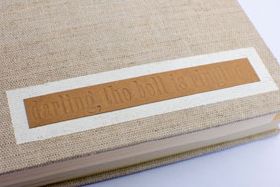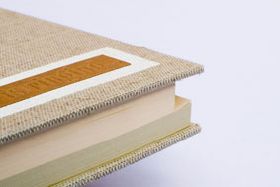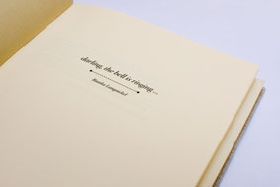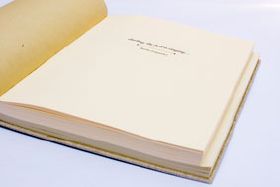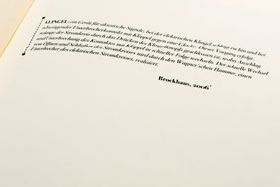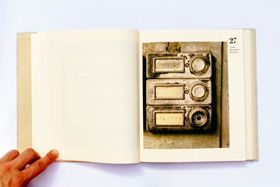The Lost Photographs of M- Maureen Anderson
"The Lost Photographs of M--" is an archive of photographs which I have taken or were taken of me or were entrusted to me and which were subsequently lost, stolen, never turned out, neglected, locked away in an inaccessible data bank, or of which no shutter was opened in the first place. It consists of 85 photographs so far. They are printed on A3 paper and given out as a blank piece of paper with a title, description and year of the image. Periodically, the data bank is checked. When an image is missing or taken out of the archive, a new title for the image is printed, creating a unique version of each photograph using the reproductive medium of the printer.
Fotoaufnahmen - Georgios Koumanidis
The following photographs, resulted after a systematic documentation of the Fachmodul meetings (Inventory & Display: Mnemosyne)
during the semester
Using two cameras, I have documentated every meeting, the camera a´ was attached to a tripod, in this case using normal lens and always from the same position, i have tooked wide shots, pictures of the general area. With the camera b´, which I held in hand, I wandered and photographed from different angles, having the opportunity for close-ups. After each meeting I archived the photo material in the computer by date and in relation to each camera. By the end of the documentation process, I chose some pictures, which I printed and rephotographed , focusing on points of interest, such as colour, or even light and shadow, contrasts.
The following photos, which I present here, are a selection of these.
For a further approach to the nature of this work I refer to Alleida Assman who writes:
"In particular, the individual, but generalizable artistic creation has an important part in the renewal of memory, by questioning the tightly drawn boundary between the Reminded and the Forgotten, which through surprising configurations repeatedly shifts."
Assman Alleida, Individuelles und kollektives Gedächtnis-Formen, Funktionen und Medien, in: "Das Gedächtnis der Kunst, Geschichte und Erinnerung in der Kunst der Gegenwart", Hatje Cantz, Ostfildern-Ruit, 2000, p. 27.
Mnemosyne - Sylvia Langenbrinck
Warburg betitelt und widmet sein unvollendetes Werk der griechischen Schutzgöttin
des Gedächtnisses und der Erinnerungskunst.
Allerdings existiert in seinem Mnemosyne Bilderatlas
Keine Tafel über Mnemosyne.
Ich habe es mir zur Aufgabe gemacht die fehlende Tafel zu ergänzen.
Buchprojekt: darling the bell is ringing - Bianka Langnickel
Es gibt kaum etwas Materielles was uns in gleicher Weise verbindet aber dennoch erlaubt, Schlüsse auf den individuellen Lebensraum/gesellschaftlichen Stand zu ziehen.
-->Konzeptionelle Überlegungen zur Arbeit
Golden Record - Sylvia Rohr
“This is a present from a small, distant world, a token of our sounds, our science, our images, our music, our thoughts and our feelings. We are attempting to survive our time so we may live into yours.” Jimmy Carter, 16. Juni 1977
Die „Voyager Golden Record“ beinhaltet Bild- und Audiomaterial, das die Menschheit und das Leben auf der Erde repräsentieren soll. Sie wurde 1977 von der NASA an die Raumsonden Voyager 1 und 2 angebracht und kurz darauf ins Weltall geschickt, um extraterrestrischen Lebewesen ein Zeugnis der Menschheit zu sein. Die Photos stammen vor allem aus den Kategorien Astronomie, Mathematik, Physik, Chemie, Biologie, Geologie oder Sport und Bildung. Die Bildersammlung sollte nicht zeigen, wie hoch entwickelt die Menschheit ist, sondern eine ungefähre Vorstellung vermitteln, was wir bisher erreicht haben, woran wir forschen und wie wir unsere Umwelt gestalten.
Da die Daten auf eine Platte gepresst und nicht als Audiosignal direkt ins All gesendet wurden, stellte ich mir diese Form der Signalübertragung zur Aufgabe. Ich wandelte das Photoarchiv in ein Tonarchiv um, das als Signal direkt ins Weltall gesendet werden könnte. Zu sehen sind hier Originalbilder sowie das Audiosignal und das Bild, was aus dem Audiosignal erzeugt wurde, um zu veranschaulichen, welche Informationen als Audiosignal gesendet werden können.
Pin up my life - Vanessa Walk
'Even small things can make a big impression'!
Diesem Sinnspruch zu folge entwarfen die beiden New Yorker Unternehmer León Winterford und Auguste Reymond bereits am 8. April 1889, vor über 122 Jahren, das erste Patent für die Produktion der sogenannten 'campaign buttons' in den USA.
Mit gerade mal 1 inch im Durchmesser revolutionierten diese gepressten kleinen Bildträger aus Metallschild, Zelluloidfolie und Sicherheitsnadel bereits kurz nach ihrer Markeinführung die Bewerbung von Wahlkampagnen, anderen Großveranstaltungen und Marken. Denn nun konnten teure Vorgängermodelle wie das aufwendig gepresste Medallion aus Edelmetall, dass schon zu George Waschingtons Zeiten zur Wahlwerbung genutzt worden war, endlich mit Hilfe kostengünstiger Materialien und zeitsparender Technik durch lukrativen industrielle Massenproduktion abgelöst werden.
Bunte Bilder und einprägsame Slogans verhalfen den Buttons zudem einen sagenhaften Sammlerstatus bei den unterschiedlichsten Bevölkerungsgruppen zu erreichen, der seit seinen Anfangsjahren bis heute immer noch ungebrochen erscheint.
My personal inventory- Jamie L. Ferguson
My archive is an inventory of my belongings. The inventory exists as a database, numbered, individual records of objects that I consider myself responsible. Each object inventoried is described with metadata. These annotations are a selective analysis of, and appended resource to, the objects. These objects do not reside physically in one location and they are distributed according to a multiplicity of variables, though fundamentally, I require they maintain portability. Of course, in actuality they do, and are, across, beyond, and through portable (transportable) but I have difficulty to reconcile this, and so, their classification method is a mnemonic. These objects are not yet designed and manufactured to incorporate their odysseys; to tell of their various physical ingredients harvested and transformed, the many hands that shape and carry them, the trajectories they have and will undergo. Until now they do not come into my possession with any bona fide memoir to tell. Seemingly distant and anonymous, intricate and estranged, our 'belong-ings' become ours to mythologize, though a reductionist projection is dangerously simplistic, and bound to summon longing.
